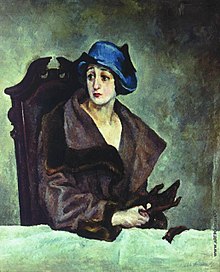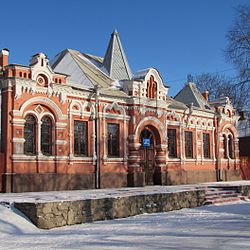Alexander Osmerkin
Young Osmerkin was raised by his Ukrainian nanny, who eventually stayed with him through the rest of his life as his personal assistant.
He took his first art lessons at the drawing department at Elisavetgrad Regional Professional School under a Peredvizhnik painter Feodosy Kozachinskiy.
There, upon invitation form Isaac Brodsky, he taught at his master's workshop at the Leningrad Academy of Arts on Vasilevsky Island.
In 1927 Osmerkin took part in the major art show ("Выставка новейших течений в искусстве") at the State Russian Museum, where his works were exhibited alongside the works of Marc Chagall, David Burlyuk, Natalia Goncharova, Mikhail Larionov, Wassily Kandinsky, Robert Falk, Kuzma Petrov-Vodkin, Pyotr Konchalovsky and other masters of Russian art.
At that time Osmerkin moved forward with his style, because the peak of avant-garde movements was over right after the revolution, and some trends were losing their novelty, so he embraced a classic and more traditional system of figurative and plastic imagery.
He had a number of talented students in Leningrad, such as Elena Skuin, Victor Teterin, Evgenia Baykova, Lev Orekhov, Ivan Godlevsky, Gleb Savinov, Olga Bogaevskaya, Vasily Savitsky, Evsey Moiseenko and other artists.
Osmerkin, as a highly original artist who contributed to development of the Russian avant-garde, risked to suffer from the Soviet officialdom under Joseph Stalin.
Along with other victims of such attacks, such as Anna Akhmatova and Mikhail Zoshchenko, Osmerkin was accused of formalism, and spreading western influence to Soviet art.
During his last years, Osmerkin was completely cut off from the Soviet public life and became an underground artist, who expressed himself in painting.

